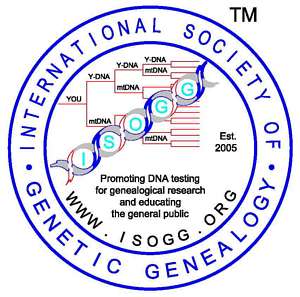Back to Y-DNA Tree Trunk
Back to SNP Index
Back to Papers Cited
Back to Glossary Back to Listing Criteria
Copyright 2006, International Society of Genetic Genealogy. All Rights Reserved.

| LINKS: Main Page Y-DNA Tree Trunk SNP Index Papers Cited Glossary Listing Criteria |
| CLADE/SUBCLADE SYMBOLS: Added |
| SNP SYMBOLS: Not on 2005 tree Confirmed within subclade Provisional Private |
I M170, M258, P19,
U179
�
I* -
�
I1 P38
� �
I1* -
� �
I1a M253, M307, P30, P40
� �
�
I1a* -
� �
�
I1a1 M227 (formerly
I1a4)
� �
�
I1a2 M21
� �
�
I1a3 M72
� �
I1b S31
� �
�
I1b* -
� �
�
I1b1 P37.2 (formerly I1b)
� �
� �
I1b1* -
� �
� �
I1b1a P41.2
(M359.2) (formerly I1b1)
� �
� �
I1b1b M26 (formerly I1b2)
� �
� �
�
I1b1b* -
� �
� �
�
I1b1b1 M161 (formerly I1b2a)
� �
�
I1b2
S23, S30, S32, S33 (added)
� �
� �
I1b2* -
� �
� �
I1b2a M223,
S24 (formerly I1c, also shown as I2)
� �
� �
�
I1b2a* -
� �
� �
�
I1b2a1 M284 (formerly I1c1,
also shown as I2a)
� �
� �
�
I1b2a2 M379
� �
� �
�
I1b2a3 P78
� �
� �
�
I1b2a4 P95
Notes
Y-DNA haplogroup I is a European haplogroup, representing nearly one-fifth of the population. It is almost non-existent outside of Europe, suggesting that it arose in Europe. Estimates of the age of haplogroup I suggest that it arose prior to the last Glacial Maximum. Probably, it was confined to the refuge in the Balkans during the last Ice Age, and then spread northward during the recolonization of northern Europe following the retreat of the glaciers.
There are two main subgroups of haplogroup I:References:
Alonso et al,
The Place of the Basques in the European
Y-chromosome Diversity Landscape. (available by subscription) European Journal of
Human Genetics, 13:1293-1302, 2005.
Athey et al,
Resolving the Placement of Haplogroup I-M223 in the Y-chromosome Phylogenetic Tree. (pdf)
Journal of Genetic Genealogy, 1:54-55, 2005.
Behar et al,
Contrasting Patterns of Y Chromosome Variation in Ashkenazi Jewish and Host
Non-Jewish European Populations. (pdf) Hum Genet 114:354-365, 2004.
Capelli et al,
Population Structure in the Mediterranean Basin: A Y Chromosome Perspective. (pdf)
Annals of Human Genetics, 2005.
Cinnioglu et al,
Excavating Y-chromosome Haplotype Strata in Anatolia. (pdf) Human Genetics. 114:127-148, 2004.
Cruciani et al,
A Back Migration from Asia to Sub-Saharan Africa Is Supported
by High-Resolution Analysis of Human Y-Chromosome Haplotypes. (pdf)
American Journal of Human Genetics, 70:1197-1214, 2002.
Flores et al,
Reduced Genetic Structure of the Iberian Peninsula Revealed by Y-chromosome
Analysis: Implications for Population Demography. (available by subscription)
European Journal of Human Genetics,
12:855-863, 2004.
Karlsson et al,
Y-chromosome Diversity in Sweden - A Long-time Perspective.
European Journal of Human Genetics, 1-8, 2006. (Comments on paper from Dienekes' Anthropological
Blog - fee for paper from www.nature.com/ejhg)
Kivisild et al,
The Genetic Heritage of the Earliest Settlers Persists in Both Indian Tribal and Caste
Populations. (pdf) American Journal of Human Genetics, 72:313-332, 2003.
Nasidze et al,
MtDNA and Y-chromosome Variation in Kurdish Groups. (abstract) Annals of Human Genetics,
69:401-412, 2005.
Rootsi et al,
Phylogeography of Y-Chromosome Haplogroup I Reveals Distinct Domains of Prehistoric Gene
Flow In Europe. American Journal of Human Genetics, 75:128-137, 2004.
Sengupta et al,
Polarity and Temporality of High Resolution Y-chromosome Distributions in India
Identify Both Indigenous and Exogenous Expansions and Reveal Minor Genetic Influence
of Central Asian Pastoralists. (pdf)
American Journal of Human Genetics, 78:202-221, 2006.
Shen et al, Reconstruction
of Patrilineages and Matrilineages of Samaritans and other Israeli Populations from Y-Chromosome
and Mitochondrial DNA Sequence Variation. (pdf) Human Mutation, 24:248-260, 2004.
Sims et al,
Sub-Populations Within the Major European and African Derived Haplogroups R1b3 and
E3a Are Differentiated by Previously Phylogenetically Undefined Y-SNPs.
Human Mutation: Mutation in Brief #940, Online, 2007.
Valone et al,
Y SNP Typing of African-American and Caucasian Samples Using Allele-Specific
Hybridization and Primer Extension. (pdf) Journal of Forensic Science, 49:4, July 2004.
Additional Resources:
Lewis Banks, Y-Haplogroup I1b2 Project
Phil Goff, Deep Ancestry of I1a DYS19=16
Cluster
Grant & Jeffrey,
I1c Y-Clan Study (now I1b2a)
Aaron Hill,
Y-DNA Haplogroup I Subclade I1a
Andrew Lancaster, I Haplogroup called Ix
Andrew Lancaster,
Report about Haplogroup I1* Clusters
Ken Nordtvedt, Modal Haplotypes for Y-Haplogroup I
Varieties
Contact People for Haplogroup I: Phil Goff or Whit Athey
Corrections/Additions made since 10 April 2006:
| Back to Main Page Back to Y-DNA Tree Trunk Back to SNP Index Back to Papers Cited Back to Glossary Back to Listing Criteria Copyright 2006, International Society of Genetic Genealogy. All Rights Reserved. |

|